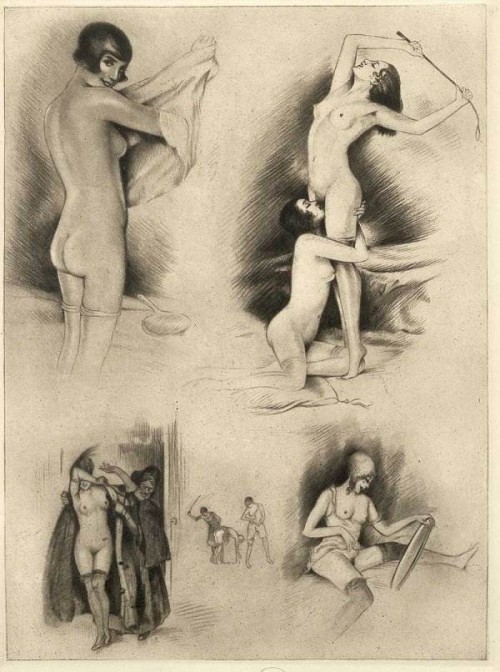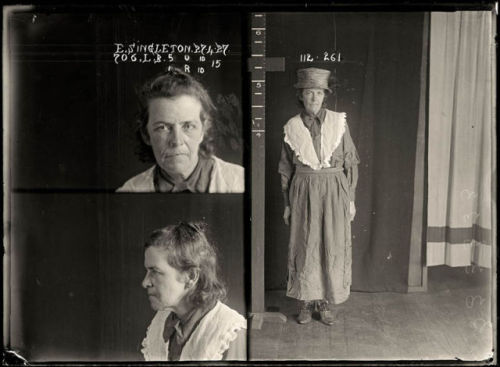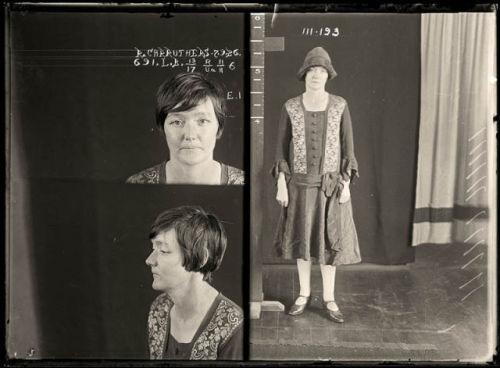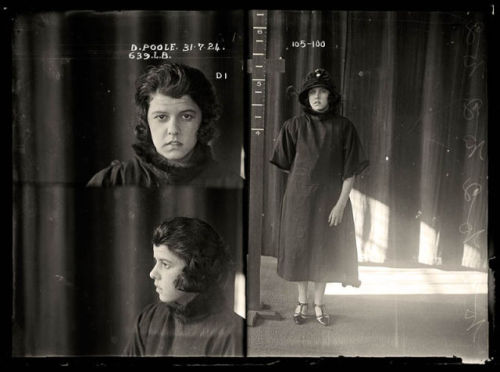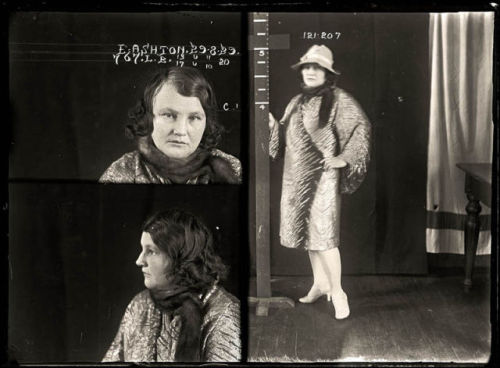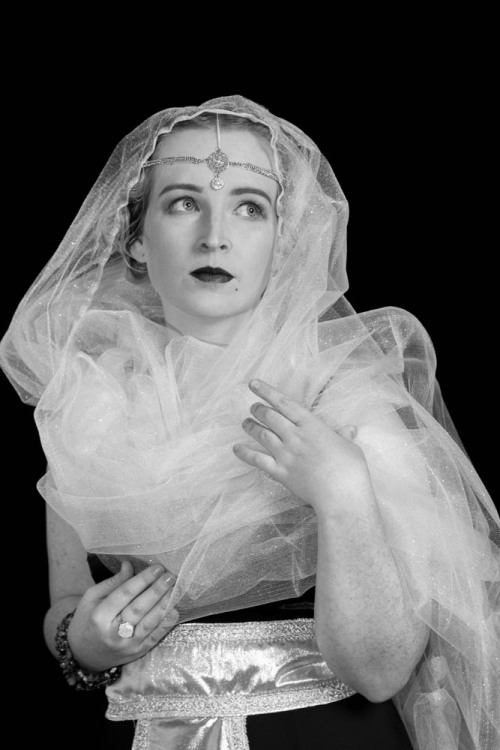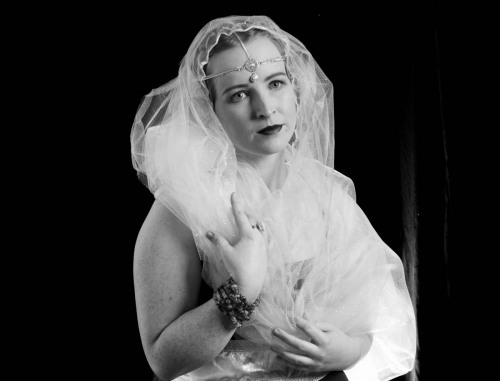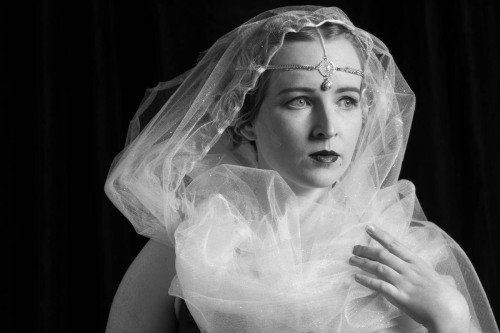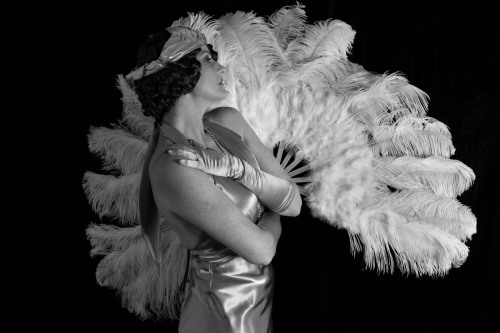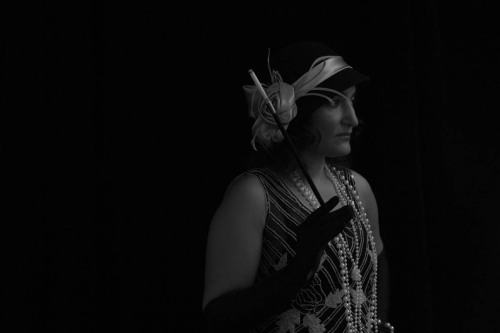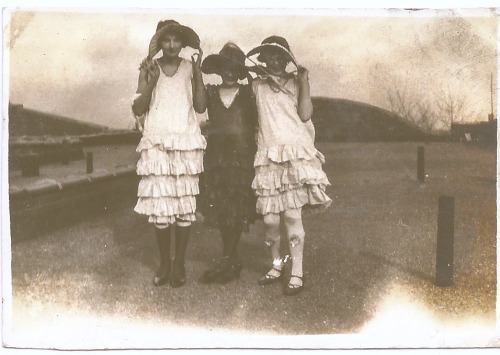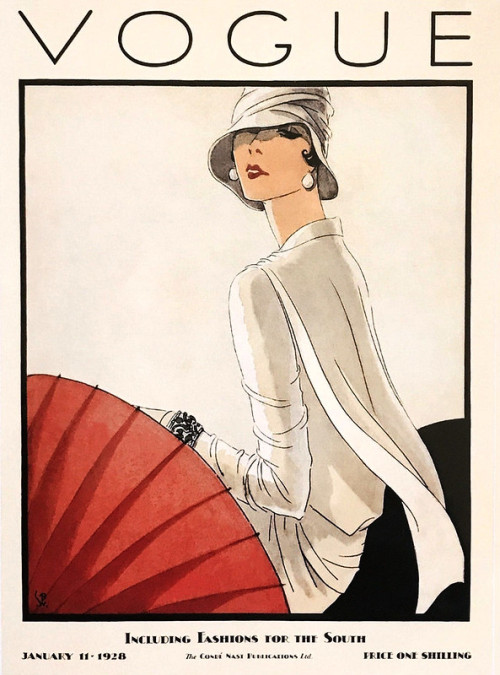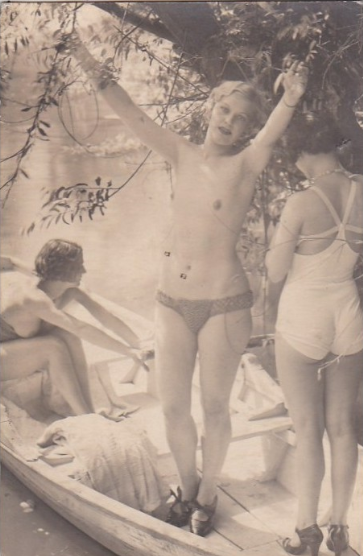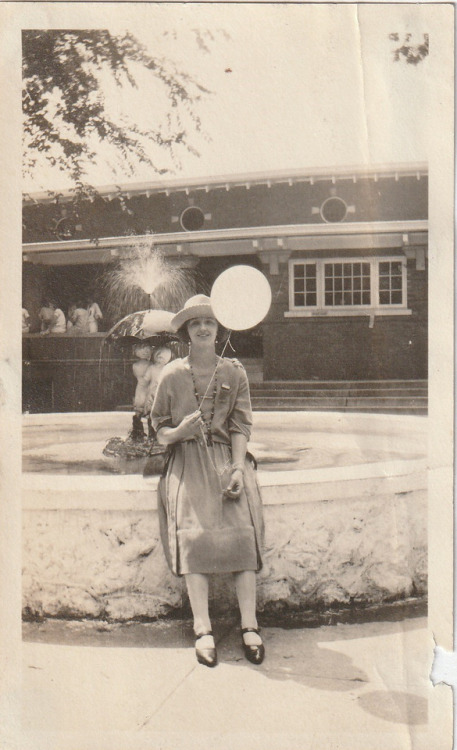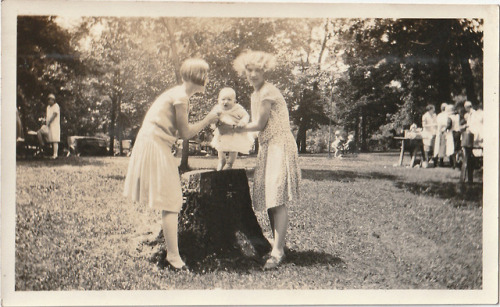#flappers
Australian mugshots from the 1920’s. I wonder what they got in for…check out grandma in the second row and the sassy looks of the two on the bottom - I wouldn’t want to cross them!
Post link
BAKERFIX BY JOSEPHINE BAKER | VINTAGE ADVERTISING
A store countertop display bust for Bakerfix hair pomade featuring Josephine Baker. In the 1920′s, Josephine Baker led the way with a style called the ‘Eton Crop’; a short shining sleek hairstyle with curls pasted to the cheek and forehead. A style so sleek it appeared to have been painted on.
Black History Album “The Way We Were”
Website|Tumblr|Pinterest|Facebook |Twitter ]
Post link
Judith Anderson’s views about ‘pleasure-bored’ flappers
Judith Anderson cuts a characteristically elegant figure in this portrait from the premiere production of George Kelly’s Behold the Bridegroom (Broadway, 1927-8). The Museum of the City of New York has a production photo featuring Judith and two of her co-stars, John Marston and Thurston Hall.
Judith portrayed a spoiled flapper, Antoinette Lyle, whose undoing proves to be the fact that she possesses every material thing and social advantage one could wish for and yet is entirely dissatisfied with life. Antoinette simultaneously has it all and is empty. Marriage risks becoming just another diversion.
In the press, Judith spoke candidly - and sagely - about the poisoned chalice of privilege, particularly in relation to the 1920s social phenomenon of the flapper. She emphasised that she herself had escaped the curse of the ‘society butterfly’ to find fulfillment in her career (which, by now, was tremendously successful). I find Judith’s comments fascinating; they’re not only enlightening in relation to social history but also point to her good sense and acute self-awareness. It’s fortunate, she concludes, that her father lost his fortune. There’s no fate worse than wealth, it seems.
‘The type of girl symbolized by Antoinette Lyle,’ in Behold the Bridegroom, says Judith Anderson, the play’s star, ‘is universal. I use the word in its purest meaning and I ought to know, for in the last year I have traveled far from the United States and back again. And on every continent, in every city and suburb, I meet the Antoinettes or the near Antoinettes. Not that I have ever known one who died either for self hate or for deep love, but I have known many who have reached the stage of utter boredom with life, complete dissatisfaction with themselves, and perfect understanding of the value of the years they have wasted.
[…]
‘The flapper in the United States has her prototype in Australia. Some time ago some one coined a name for the flapper’s big sister. I think it was “zipper”. They, too, exist in both continents. Rich and unrestrained, they dash through a youth full of pleasure only to approach their 30s blase and disillusioned and a trifle shopworn. When I was of the flapper age in Adelaide, my native town in Australia, I was brought up to be a society butterfly. Like the Lyles, we lived in a community considered smart for our part of the world. And many of the first families had daughters and sons who belonged to a fast set. They wanted to show the English visitors that the colonials weren’t dull and slow. Father was at one time a very wealthy man. He was called the “Silver King” of Australia. I was pampered and spoiled by him and his generosity, just as Mr. Lyle spoiled his daughter in the play. Were it not for a quiet, loving mother and her intelligent direction, I myself might have developed as Antoinette did under the limp disciplinary rod her father wielded.
‘I doubt, however, if I were temperamentally inclined towards such a hectic existence as I lead in Behold the Bridegroom. But children of the rich are prone to develop into selfish adults with a rudeness often mistaken for wit. Fortunately, father lost his money, so we picked up our lares and penates and moved out of the wealthy pleasure-bored set to Sydney, where I started on my stage career.’
- ‘Judith Anderson on Flappers’, The Brooklyn Daily Eagle, 11 March 1928
Post link

Versatile styles for the Young woman…in 1927
One of the several inspirations for the early cartoon character Betty Boop (the others including singer Helen KaneandEsther Jones) was early silent movie actress Clara Bow, pictured above in in a terrifying butterfly ride of some kind.
Clara Bow is an interesting figure for a number of reasons, one of the more tragic of these being how she was effectively forced out of showbiz despite her at the time high level of fame due to a blackmail scheme by a Hollywood tabloid and a disgruntled employee.
Essentially, the story was thus: In 1930, Clara’s friend and former hairdresser-turned-manager-turned-secretary Daisy DaVoe stole a bunch of Clara’s personal papers and attempted to blackmail her now former friend about her personal life if she didn’t cough up some cash.
When this didn’t happen, Daisy teamed up with the Coast Reporter’s publisher Frederic Girnau to write a 60 page article, titled Clara’s Secret Love-Life as told by Daisy, where they laid out Clara’s supposed history of drug fueled bisexual orgies. They then contacted actor (and Clara’s later husband), Rex Bell, saying that if they paid Girnau $25,000 (approximately $432,797.90 in 2022 money) for the entire newspaper, they wouldn’t publish the hit piece.

Bell, acting on Clara’s behalf, refused to pay, so out of spite Girnau sent copies of the article to Will Hays (first president of the Motion Picture Producers and Distributors of America, and the man for whom the Hollywood censorship code was named), Superior Court Judges, and local PTA officials. This, ironically, got Girnau in trouble with the federal government even as Bell called the cops on Daisy for her scheme, as due to the statutes surrounding mailing “obscene“ materials at the time, Girnau had violated Section 211 of the U.S. Penal Code on top of his involvement in the blackmail scheme.
Unfortunately for Clara, while it’s totally possible that the studio could have made Daisy and Girnau’s fictional tales of Clara, say, sleeping with an entire football team that included a pre-stardom John Wayne, just go away by paying them what they wanted, Bow’s decision to go to court ended up getting the content of article being made public…
And Hollywood being Hollywood, and people who already had a low opinion of Clara due to her being the poster girl for flapper girl subculture (folk taking a dim view of how young women were suddenly openly drinking, dancing to jazz, and so on), a lot of people saw the content of the article and assumed that it must be true. Because in their minds, Clara apparently having more than one boyfriend prior to her eventually marrying Rex “obviously“ means that the deliberately defamatory content of the article must be true too, right?

Daisy was eventually convicted for grand theft, as it came out in the trial that even before her extortion attempt she had been using her position as Clara’s secretary to steal thousands of dollars from the star. Girnau, meanwhile, was sentenced to eight years in prison due to the aforementioned charge related to posting obscene materials.
Clara’s career, meanwhile, was already on the decline by the time the trial started, and a combination of the stress of the trial and the enormously negative press coverage surrounding DaVoe and Girnau’s lies (as in local papers reported the claims as fact, not condemning them for making stuff up) eventually leading to her having a breakdown, resulting in a period in a sanitarium.
At the age of only 25, her career was over.
While she went on to make a few more movies (mostly due to pressure from her manager), at her request, she was released from the contract of her final movie, the pre-Hays Code noir City Streets (1931). She would eventually go on to marry Rex, and retired to a ranch in Nevada where she lived for the next few decades with her kids and dealt with bouts of poor mental health. Interviews with her following her retirement made it seem like she didn’t particularly regret her career, even if she had come to loathe public life. As she states in a 1933 interview with the Kansas City Star:
My life in Hollywood contained plenty of uproar. I’m sorry for a lot of it but not awfully sorry. I never did anything to hurt anyone else. I made a place for myself on the screen and you can’t do that by being Mrs. Alcott’s idea of a Little Woman.
She died in 1965 of a heart attack at the age of 60.
Post link

French actress and photographer’s model Lucette Desmoulins. Desmoulins is best known for posing for the Biederer Brothers in France and for having roles in the films Un soir de réveillon(1933),77 rue Chalgrin (1931) and Le bossu(1934).
Young couple in Chicago Winter, 1920s.
No Chinese are known to have been in Chicago until the first trans-continental railyway was completed in 1869. By 1874 there were already 18 laundries and one tea shop in the central part of the Chicago, all managed by Chinese. They came from the Pacific coast for a more tolerant society after anti-Chinese violence broke out in San Francisco, Los Angles, and elsewhere in the western part of the country.
Post link
“Bunch of Balloons” - a group of young ladies posing at a park with rubber balloons on sticks, possibly as part of some kind of event as they are all wearing ribbon pins. Snapshots, c. 1920s.
Post link



